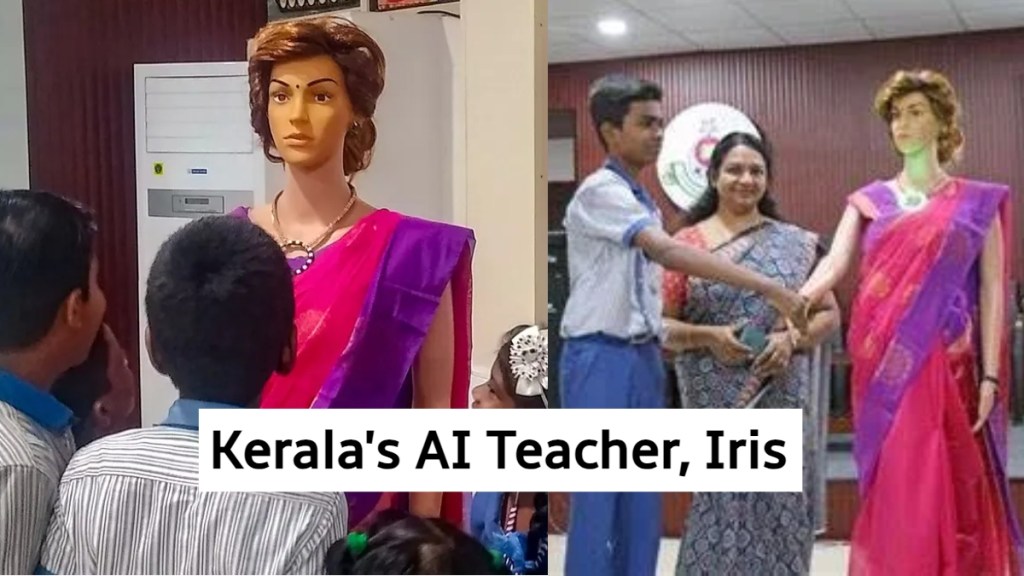Shortage of teachers has been a common global issue. Case in point: according to estimates produced by the United Nations Educational, Scientific and Cultural Organization (UNESCO) in 2016, the world needs nearly 69 million more teachers by 2030 to achieve universal basic education (SDG 4), yet current trends see this deficit increasing. To tackle this issue and harness the power of Artificial Intelligence (AI) in education, the KTCT Higher Secondary School, supported by the Kaduvayil Thangal Charitable Trust, has joined forces with MakerLabs Edutech Private Limited with Iris, Kerala’s first AI teacher. AI robots such as Iris can enhance the teaching staff by providing personalised assistance, aiding in repetitive tasks such as grading and offering additional learning resources, Shantanu Rooj, founder and CEO, TeamLease Edtech, told FE Education. “Nevertheless, it is essential to view them as supplements rather than substitutes for human educators. Robots lack the human empathy and nuanced comprehension necessary for providing emotional support and handling intricate teaching scenarios,” he said.
Furthermore, while ageing populations frequently struggle to fill vacancies left by retiring teachers, rapidly expanding regions are anticipated to generate a significant influx of new teaching opportunities by 2030, according to a report by UNESCO.
Experts believe that incorporating AI with robots such as as Iris into education is in line with overarching objectives, as it amplifies personalised learning, assists educators in evaluating student advancement and furnishes immediate feedback. Iris can analyse learning behaviours, customise materials to suit individual requirements and accommodate a wide range of learners, thus facilitating personalisation and inclusivity, thereby ensuring that each student receives suitable assistance. “To attain optimal learning results, adopting a hybrid approach that integrates AI technology with human interaction is crucial. Consequently, the idea of AI entirely supplanting teachers is improbable. While AI can aid in automating educational tasks, educators excel in managing emotions and providing nuanced support that fosters deeper understanding and connection with students,” Vineet Govil, chief technology and product officer (CTPO), Physics Wallah, said.
Meanwhile, it is believed that results produced by AI teachers may lack explicable or overridable characteristics, often lacking full transparency or accountability. Therefore, it’s essential to construct their knowledge base by drawing upon the insights of human teachers and utilising human-based educational assessment methodologies to identify biases and enhance fairness. Moreover, according to experts, establishing appropriate safeguards within AI teaching systems is imperative to address concerns regarding privacy, security and the generation of inappropriate language or content. “Consequently, to foster an effective educational environment, it’s crucial to integrate both human expertise and technological advancements, ensuring that the resulting outcomes are not only effective but also efficient,” Govil added.
Furthermore, rather than aiming to replace human educators, AI is poised to prompt a transformation in their roles, emphasising facilitation, mentorship, counselling and improved curriculum design. This shift underscores the significance of cultivating AI-friendly classrooms, enabling learners to adapt and excel in evolving workplace environments, according to experts. “Achieving this goal would require upskilling teachers and implementing policies that prioritise equitable and ethical utilisation of AI technology. Through these efforts, we can foster a more dynamic and inclusive educational landscape in India, empowering both educators and learners alike,” Rooj said.
Meanwhile, experts also suggest that adopting a ‘wait and watch’ attitude allows for the evaluation of Iris’s effectiveness in real-world settings. It’s essential to prioritise a collaborative approach in its development and implementation by involving educators, parents, as well as students in the conversation. “This ensures that the technology not only addresses real educational needs but also integrates seamlessly with existing teaching methods and classroom setups. The journey towards educational innovation with AI like Iris should be marked by open innovation, mindful adoption, and the collective effort of all stakeholders to ensure its success benefits every student and teacher involved,” Manav Subodh, MD, One Million for One Billion, explained.

